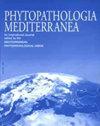High-density ‘Spadona’ pear orchard shows reduced tree sensitivity to fire blight damage due to decreased tree vigour
IF 1.9
3区 农林科学
Q2 AGRONOMY
引用次数: 2
Abstract
Fire blight, caused by Erwinia amylovora, is a severe disease of pear (Pyrus communis). Highly vigorous trees are more sensitive to E. amylovora damage after summer pruning. Trees grown in high-density orchards have lower vigour than those in low-density orchards, reducing required inputs for pruning and tying, and increasing per hectare yields orchard profitability. Tree damage due to fire blight was assessed in high-density pear orchards vs. the common Israeli low-density orchards. Pear trees were planted at high densities using the spindle system (2500 trees ha-1 for ‘Spadona’ and 1250 trees ha-1 for ‘Coscia’), or at low density (1000 trees ha-1) using palmeta (’Spadona’) or open vase (‘Coscia’) systems. Four years after planting, both orchards were similarly infected with fire blight (11–50 infected blossoms per tree), but 1 year after infection, trees in the high density orchard had blossoms infections in the main limbs or trunk bases compared to the low-density orchard. At 3 years after initial infection, no trees had died in the high density orchard, whereas in the low density ‘Spadona’ orchard, 10% of the trees were wilted. For the more tolerant ‘Coscia’, infection did not progress at either orchard density. These results indicate that in fire blight-susceptible pear cultivars, a high density planting system, associated with reduced tree vigour, presents a decreased risk of fire blight damage.高密度的“Spadona”梨园显示,由于树木活力下降,树木对火枯病的敏感性降低
梨火疫病是梨的一种严重病害。高度旺盛的树木在夏季修剪后对淀粉样大肠杆菌的损伤更敏感。高密度果园中生长的树木比低密度果园中的树木活力更低,从而减少了修剪和捆扎所需的投入,并提高了果园的每公顷产量和盈利能力。对高密度梨园与以色列普通低密度梨园因火疫病造成的树木损失进行了评估。梨树采用纺锤形系统高密度种植(2500棵树ha-1代表“Spadona”,1250棵树ha-代表“Coscia”),或采用palmeta(“Padona”)或开放花瓶(“Cosia”)系统低密度种植(1000棵树ha-1-)。种植四年后,两个果园都受到了类似的火疫病感染(每棵树有11–50朵受感染的花朵),但在感染一年后,与低密度果园相比,高密度果园的树木主枝或树干基部有花朵感染。在初次感染后3年,高密度果园中没有树木死亡,而在低密度的“Spadona”果园中,10%的树木枯萎。对于更具耐受性的“Coscia”,无论在哪个果园密度下,感染都没有进展。这些结果表明,在易感火疫病的梨品种中,高密度种植系统与树木活力的降低相关,降低了火疫病危害的风险。
本文章由计算机程序翻译,如有差异,请以英文原文为准。
求助全文
约1分钟内获得全文
求助全文
来源期刊

Phytopathologia Mediterranea
生物-植物科学
CiteScore
4.40
自引率
8.30%
发文量
28
审稿时长
6-12 weeks
期刊介绍:
Phytopathologia Mediterranea is an international journal edited by the Mediterranean Phytopathological Union. The journal’s mission is the promotion of plant health for Mediterranean crops, climate and regions, safe food production, and the transfer of new knowledge on plant diseases and their sustainable management.
The journal deals with all areas of plant pathology, including etiology, epidemiology, disease control, biochemical and physiological aspects, and utilization of molecular technologies. All types of plant pathogens are covered, including fungi, oomycetes, nematodes, protozoa, bacteria, phytoplasmas, viruses, and viroids. The journal also gives a special attention to research on mycotoxins, biological and integrated management of plant diseases, and the use of natural substances in disease and weed control. The journal focuses on pathology of Mediterranean crops grown throughout the world.
The Editorial Board of Phytopathologia Mediterranea has recently been reorganised, under two Editors-in-Chief and with an increased number of editors.
 求助内容:
求助内容: 应助结果提醒方式:
应助结果提醒方式:


